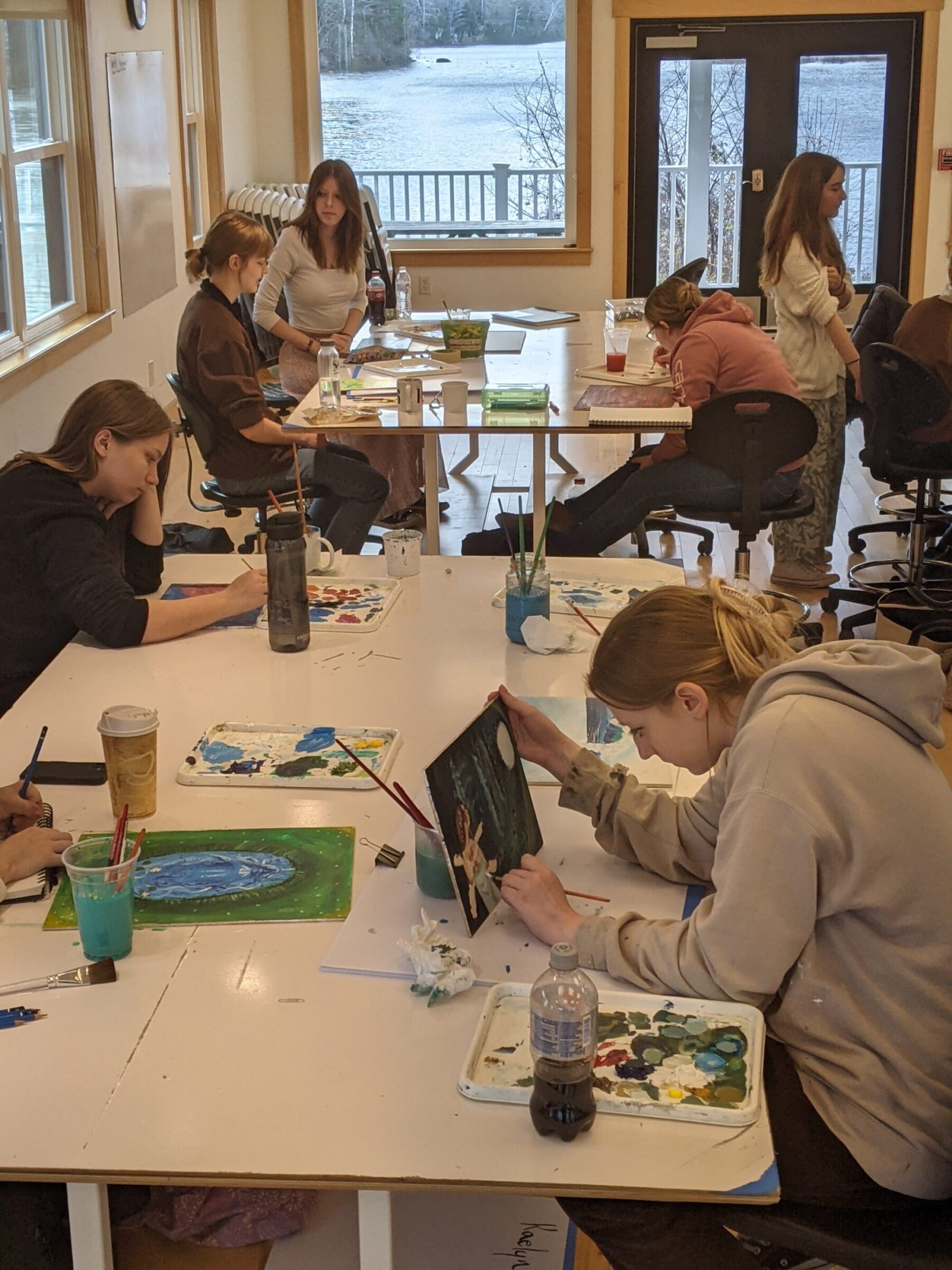
The latest rounds of the Monson Arts High School Program saw students take the first steps in editing creative pieces through peer feedback and layered exercises, taking these focused moments and going back to the canvas and page to build more complicated works. In addition, both the high school visual arts and writing pods were visited by current Monson Residents which allowed them to interact and learn from professional artists and writers.
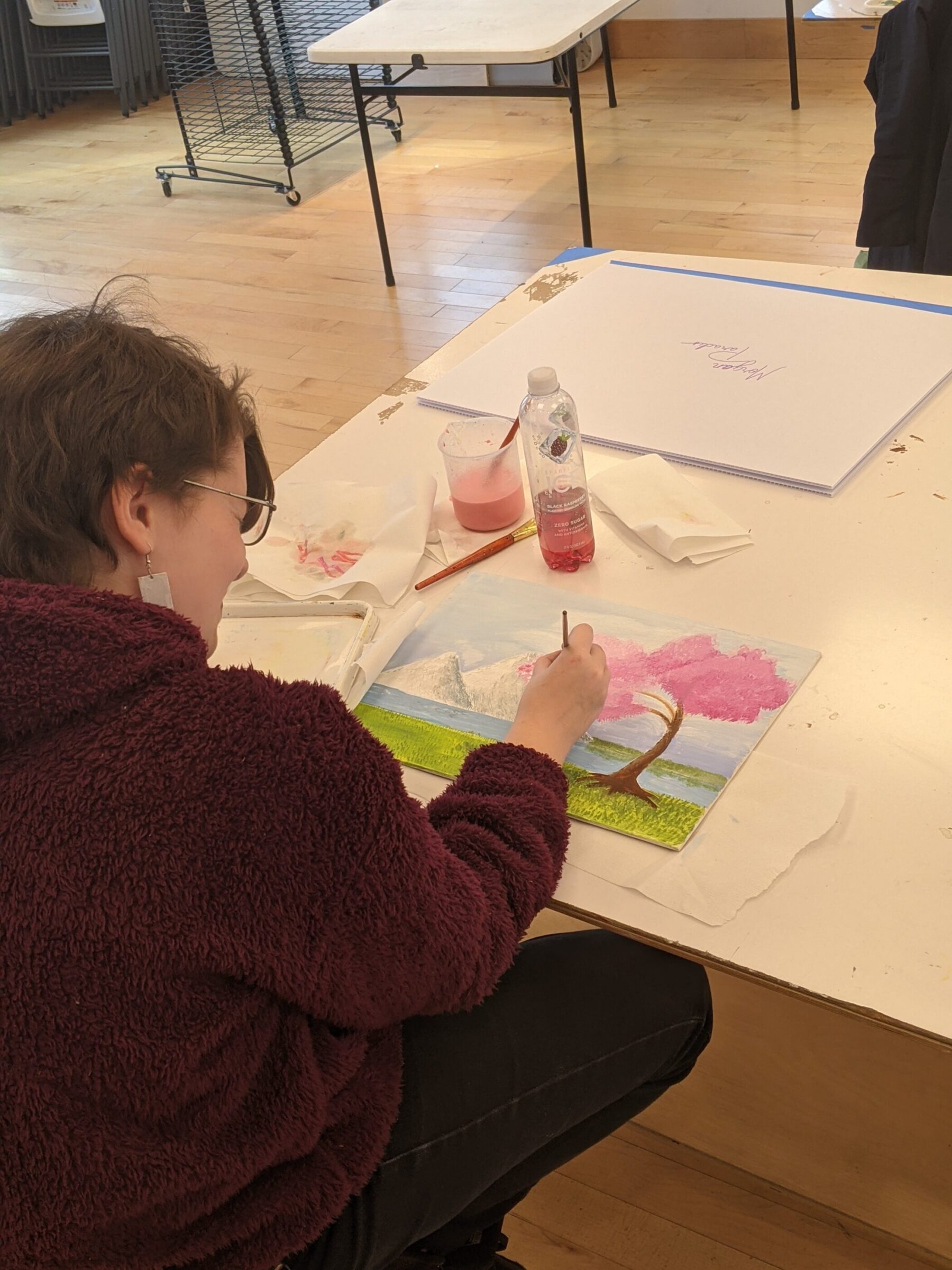
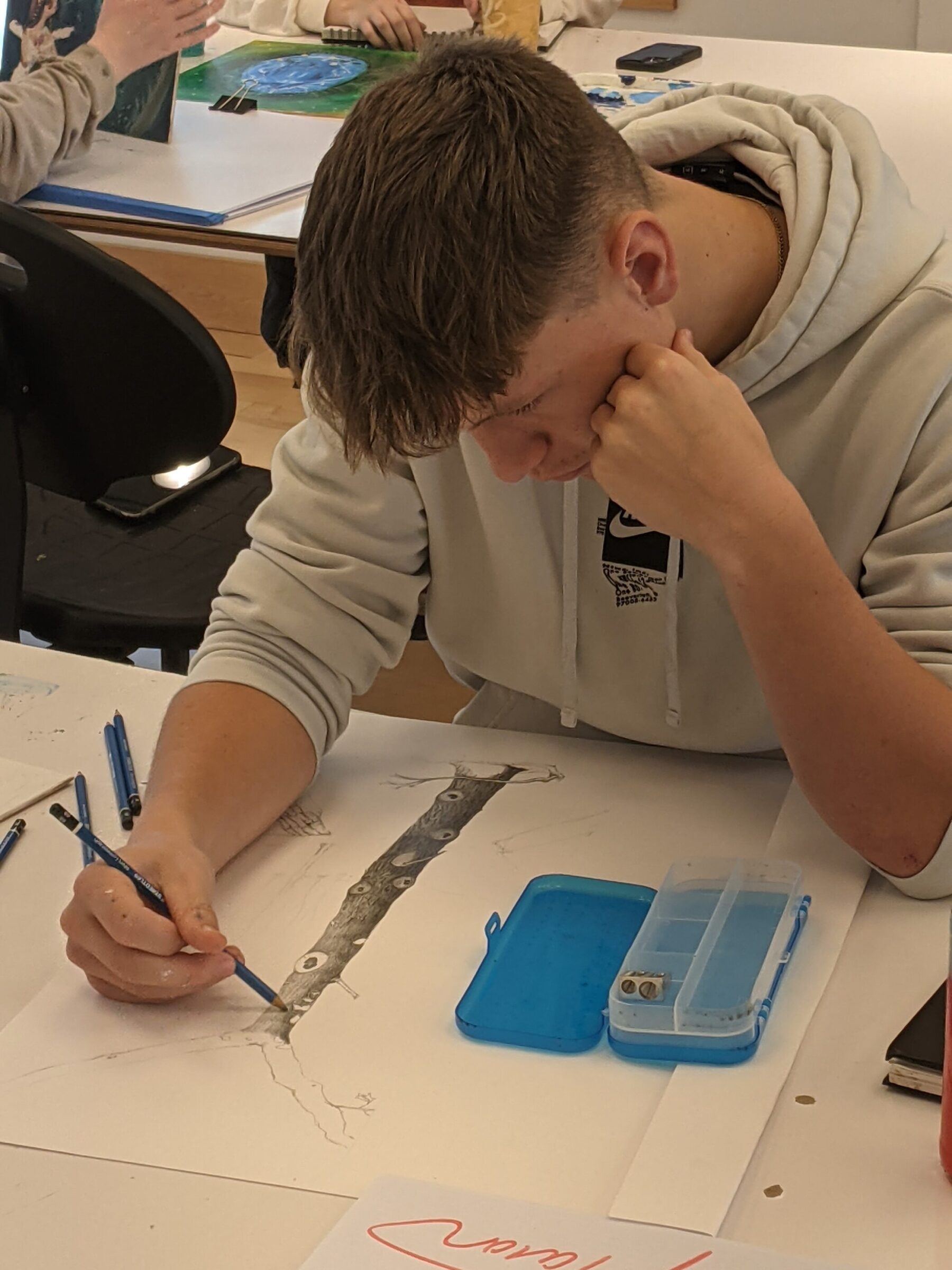
Visual Arts
In the first class of this newsletter focus, students in VA finished up some of the paintings that evolved out of the first day’s drawing excursion to the old hotel ruins on the shore of Lake Hebron. Diving deeper, teacher Alan Bray had students hang up these works on the wall then facilitated a discussion of the various approaches each student took to record what they saw and felt about that day in the woods. This helps the students understand how they individually approach a project which informs them on how to build a practice. Later, Alan and Monson Arts wood and metal shop technician, James Pullen, presented a slide show of specific types of 3D work students will be exploring after the Holiday season. Lastly, students did prep work for the next class: portraiture with guest artist Lydia Rose Spencer.
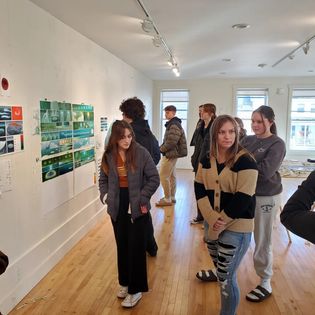
The following class found students being led by painter Lydia Rose Spencer, who specializes in portraiture. In Lydia’s words, “We started with a brief history of how modern representational portraiture developed. We looked at specific artists who advanced our understanding of painting from the Baroque period to the Impressionists. Then we talked about how to choose references and how to see forms, values and planes when looking at your reference. From there we worked on developing a painting together. We all worked from the same reference; my focus for the class was teaching them the basics of how to paint a portrait and capture a likeness – which is incredibly difficult! They did amazing!”
Afterwards, students and teachers visited two Monson Arts Residents, Katarina Papazissi a multidisciplinary artist from Greece and Ashley Eliza Williams a painter and sculptor living in western Massachusetts. Connecting with professional artists allows students to not just witness higher works of art ‘in process’ but also engage with evolved concepts, sparking threads to develop in their imaginations as to how an idea (for example, Ashley trying to answer the question “what do birds dream about”) can inspire a body of work or a focused project. A lively, eye-opening day!
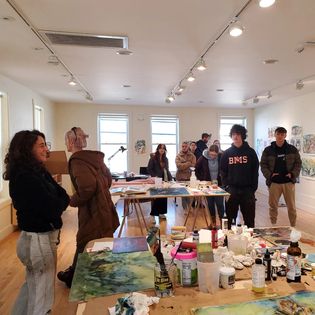
*****************************************
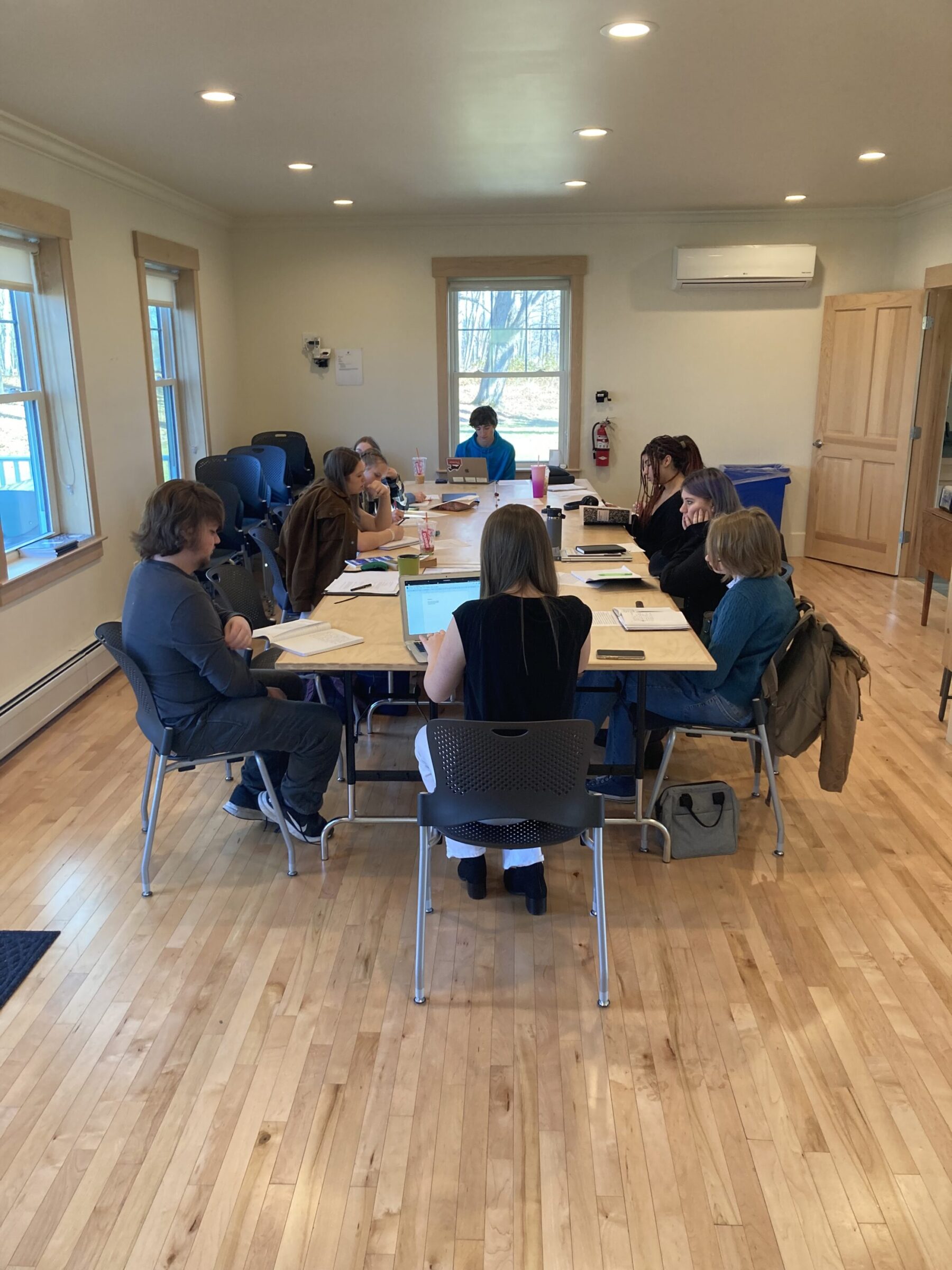
Writing
Teacher Dawn Potter started fast in the latest series of classes. Having students get out of their chairs and form a circle, she had them toss a beanbag to one another while shouting a random word which led to the students connecting similar images and themes. Quickly, this moved into a writing prompt where Dawn would drop a word every 20 seconds onto the students which they had to use in a sentence while they were actively writing. Directly after this came the study and exercise of the first paragraph of Herman Melville’s Moby Dick in which students pulled out 10 words then spent 15 minutes writing a paragraph before sharing and discussing them with the group.
Onward we write! Dawn then shared a poem from her poetry group back in Portland, a sonnet poem, one of the more known poetic forms (a 14-line poem). After reading the original draft she went through the process of how she made the poem better, getting students to think about how she edited it, and how a poet plays with improving the work. Students then applied this idea in redoing their Melville/Moby Dick exercise, titling their piece then making edits and decisions that were designed to make the work stronger or pull it in another direction. The rest of the class centered around a sonnet by the award winning American poet Terrance Hayes where students paired off and created a team sonnet.
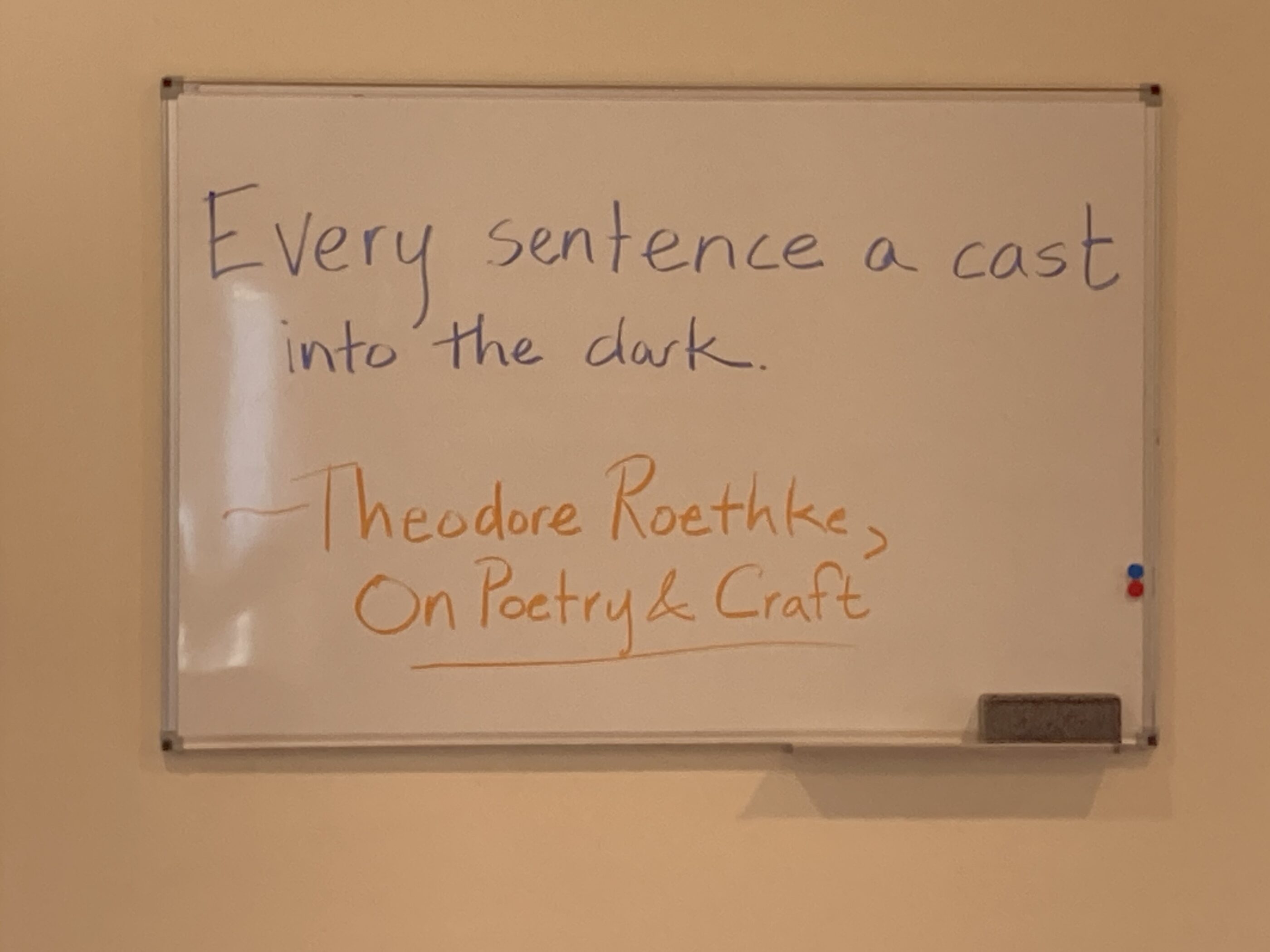
For the next class, in teacher Dawn Potter’s words:
“The theme of the day was imagination, which I used as an umbrella term to cover both the imaginative use of words (e.g., figurative language) and the act of pushing our writing out of ourselves into imagined territory.
We began by looking at several examples of imaginative language from a variety of times and genres–poetry, fiction, nonfiction–by authors such as Elizabeth Bowen, William Shakespeare, Merlin Sheldrake, Diane Seuss, Natalie Diaz, and William Blake. After we talked about how the individual excerpts were moving themselves from words into image, we each chose one example and used it as a jumpstart for a first draft.
Then we turned to the day’s major project: a series of linked writing prompts centering around the map of a mysterious land. The prompts propelled the students into creating characters who existed in this land, describing a setting, constructing a back story, etc.”
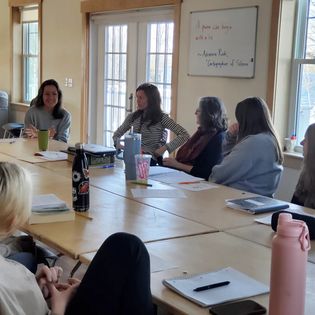
“In the midst of this project, we were visited by two current artists-in-residence, (Ayrn Kyle and Ellen Adams) both of them fiction writers, who spoke to us about their projects, their approach to writing, their hopes and fears about the artistic life. Students were extremely engaged, asking questions and offering comments. Afterward Cole said, “I love listening to smart people talk,” and the other kids all nodded in agreement.
Among other things, the visitors shared several tips about story writing that we all found extremely useful in our map project. It was perfect timing to have a pair of fiction writers arrive just as we were inventing these complicated first drafts.”
The last class before Christmas break both the visual arts and writers will do a bookmaking project together!
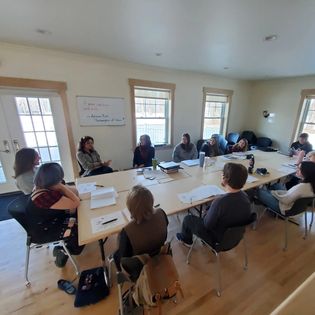

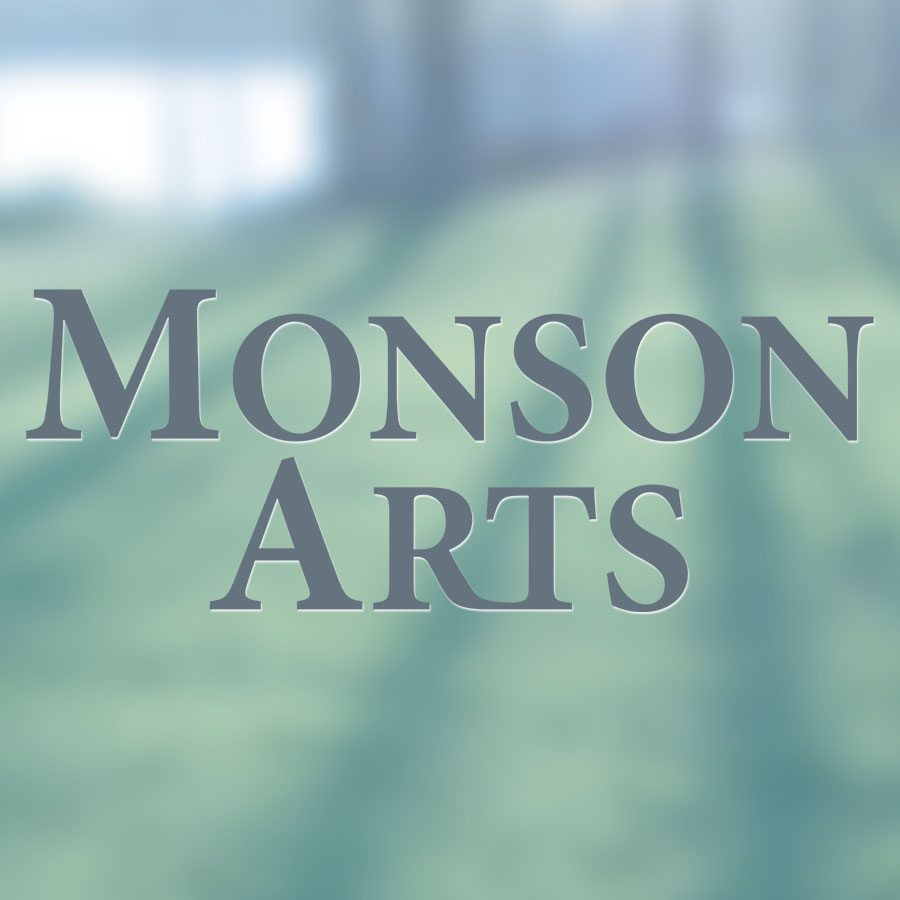 Time and space to create.
Monson Arts is a new artists’ residency and arts center in Monson, Maine. Programs include residencies for artists and writers, intensive shorter workshops, and educational partnerships with area secondary schools.
Time and space to create.
Monson Arts is a new artists’ residency and arts center in Monson, Maine. Programs include residencies for artists and writers, intensive shorter workshops, and educational partnerships with area secondary schools.